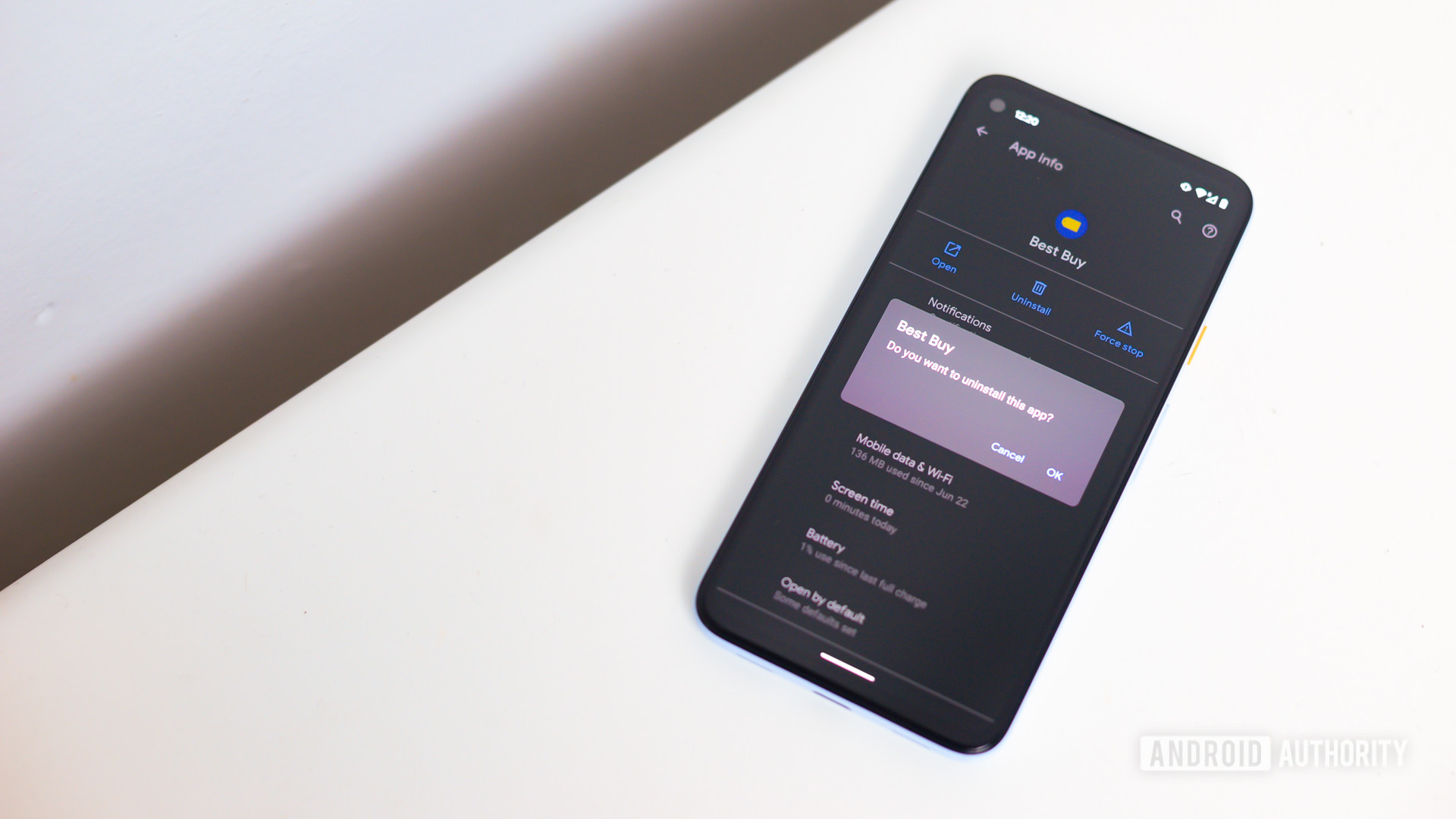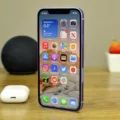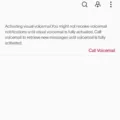In the world of Android devices, apps play a significant role in enhancing our smartphone experience. However, sometimes we come across apps that we no longer need or want to use. Fortunately, Android provides us with options to disable these apps without uninstalling them completely.
To disable an app on Android, follow these steps:
1. Open the Settings app on your Android device. You can usually find it in your app drawer or by swiping down from the top of the screen and tapping the gear icon.
2. Scroll down and find the “Apps & notifications” option. Tap on it to proceed.
3. In the Apps & notifications menu, you will see a list of all the apps installed on your device. Tap on “App info” to view more details about each app.
4. Now, you will see a list of all the apps on your device. Scroll through the list and find the app you want to disable. Tap on it to open its settings.
5. In the app settings, you will find options like “Force stop,” “Uninstall,” and “Disable.” If the app can be disabled, you will see the “Disable” option. Tap on it to disable the app.
6. A confirmation prompt will appear, informing you about the consequences of disabling the app. If you are sure about disabling the app, tap on “Disable app” to proceed.
7. Once disabled, the app will no longer be accessible from your app drawer or home screen. It will also stop running in the background and consuming system resources.
It’s important to note that not all apps can be disabled. Some system apps, which are essential for the functioning of your device, cannot be disabled or uninstalled. These apps are typically labeled as “System apps” or have the manufacturer’s name associated with them.
Disabling an app is a great way to free up storage space, improve device performance, and reduce clutter. It allows you to keep the app on your device in case you need it in the future, without it running or taking up valuable resources.

How to Enable a Disabled App on Your Android Device?
1. Open the Settings app and navigate to “Apps & notifications” as mentioned earlier.
2. Tap on “App info” and scroll through the list of apps to find the disabled app.
3. Once you find the app, tap on it to open its settings.
4. In the app settings, you will find an “Enable” option. Tap on it to enable the app again.
5. The app will now be re-enabled and accessible on your device.
By disabling unnecessary apps, you can optimize your Android device’s performance and create a cleaner and more streamlined user experience. So, take a few moments to go through your apps and disable any that you no longer need or use. Your device will thank you!
Can You Disable an Android App Without Uninstalling It?
It is possible to disable an Android app without uninstalling it. Disabling an app means that it will no longer be actively running or accessible on your device, but it will still be present on your device’s storage. This can be useful if you want to free up system resources or prevent certain apps from running in the background.
To disable an app on Android, follow these steps:
1. Open the Settings app on your Android device.
2. Scroll down and select “Apps” or “Applications” (the name may vary depending on your device).
3. You will see a list of all the apps installed on your device. Find the app you want to disable and tap on it.
4. On the app’s information page, you should see options such as “Force Stop,” “Disable,” or “Uninstall.” Tap on the “Disable” option.
5. A confirmation message will appear, informing you about the consequences of disabling the app. Tap “Disable” again to confirm.
Once disabled, the app will no longer be visible in your app drawer or accessible from the home screen. However, keep in mind that system apps or apps that are essential to the functioning of your device cannot be disabled.
If you ever want to enable a disabled app again, you can follow the same steps and select the “Enable” option instead of “Disable.”
It’s important to note that disabling an app will not remove it from your device completely. It will only prevent it from running and using system resources. If you want to completely remove an app from your device, you will need to uninstall it instead.
How Do You Temporarily Block an App on Android?
To temporarily block an app on your Android device, follow these steps:
1. Open the Settings app on your Android device.
2. Look for and tap on the “Digital Wellbeing & parental control” option. This may be located under different names depending on your device or Android version, such as “Digital Wellbeing” or “Parental Controls”.
3. Once you’re in the Digital Wellbeing or parental control section, find and tap on the “Dashboard” option.
4. On the Dashboard page, you will see a list of all the apps installed on your device. Scroll through the list and find the app you want to block temporarily.
5. Tap on the app to access its settings.
6. In the app settings, you should find an option to set a time limit for the app. This may be called “App Timer” or something similar. Tap on this option.
7. Set the desired time limit for the app. You can choose from options like 15 minutes, 30 minutes, 1 hour, etc. Alternatively, you may have the option to set a custom time limit.
8. Once you have set the time limit, tap on the “OK” or “Save” button to apply the block.
Repeat these steps for any other apps you want to temporarily block on your Android device. The app will be blocked for the specified time limit, after which you will be able to access it again. This feature can be helpful for managing screen time and reducing distractions on your device.
Can You Disable an App And Enable It Again?
It is possible to disable an app on Android devices and then enable it again. Here are the steps to do so:
1. Open the Settings app on your Android device.
2. Scroll down and tap on “Apps & notifications” or “Applications” (depending on your device).
3. Look for and tap on “App info” or “Manage apps” (the exact wording may vary).
4. You will see a list of all the apps installed on your device. Tap on “All apps” or “Installed apps” to view all the apps.
5. Scroll through the list or use the search bar to find the app that you want to disable.
6. Once you find the app, tap on it to open its details page.
7. On the app’s details page, you will find the option to disable the app. It may be labeled as “Disable” or “Turn off” (again, the wording may vary).
8. Tap on the disable option, and you will be prompted with a confirmation message.
9. Confirm the action by tapping “OK” or “Disable” (the exact wording may vary).
10. The app will now be disabled, and you will no longer be able to use it or access its features.
To enable the app again, follow these steps:
1. Open the Settings app on your Android device.
2. Go to “Apps & notifications” or “Applications” (depending on your device).
3. Tap on “App info” or “Manage apps.”
4. Look for the “Disabled apps” or “Turned off” option and tap on it.
5. You will see a list of all the disabled apps on your device.
6. Scroll through the list or use the search bar to find the app that you want to enable.
7. Once you find the app, tap on it to open its details page.
8. On the app’s details page, you will find the option to enable the app. It may be labeled as “Enable” or “Turn on” (the wording may vary).
9. Tap on the enable option, and the app will now be enabled again.
10. You can now use the app and access its features as before.
By following these steps, you can easily disable and enable apps on your Android device whenever needed.
Conclusion
Managing apps on your Android device is a simple process that can help you declutter and optimize your device’s performance. Whether you want to uninstall or disable an app, or even block certain apps for specific time limits, you have the flexibility to customize your device according to your preferences.
By uninstalling or disabling unnecessary apps, you can free up storage space, reduce background processes, and potentially improve battery life. This can lead to a smoother and faster user experience.
Additionally, blocking apps can be useful for limiting screen time or preventing access to certain apps, especially for parental control purposes. This can help promote a healthier balance between device usage and other activities.
Remember that while you can uninstall or disable most apps, some system apps cannot be removed or disabled. However, you can still make them inactive or hide them from your app dashboard to minimize their impact on your device.
Taking control of your apps can contribute to a more organized and efficient Android experience. So don’t hesitate to explore the settings and options available to manage your apps effectively.













